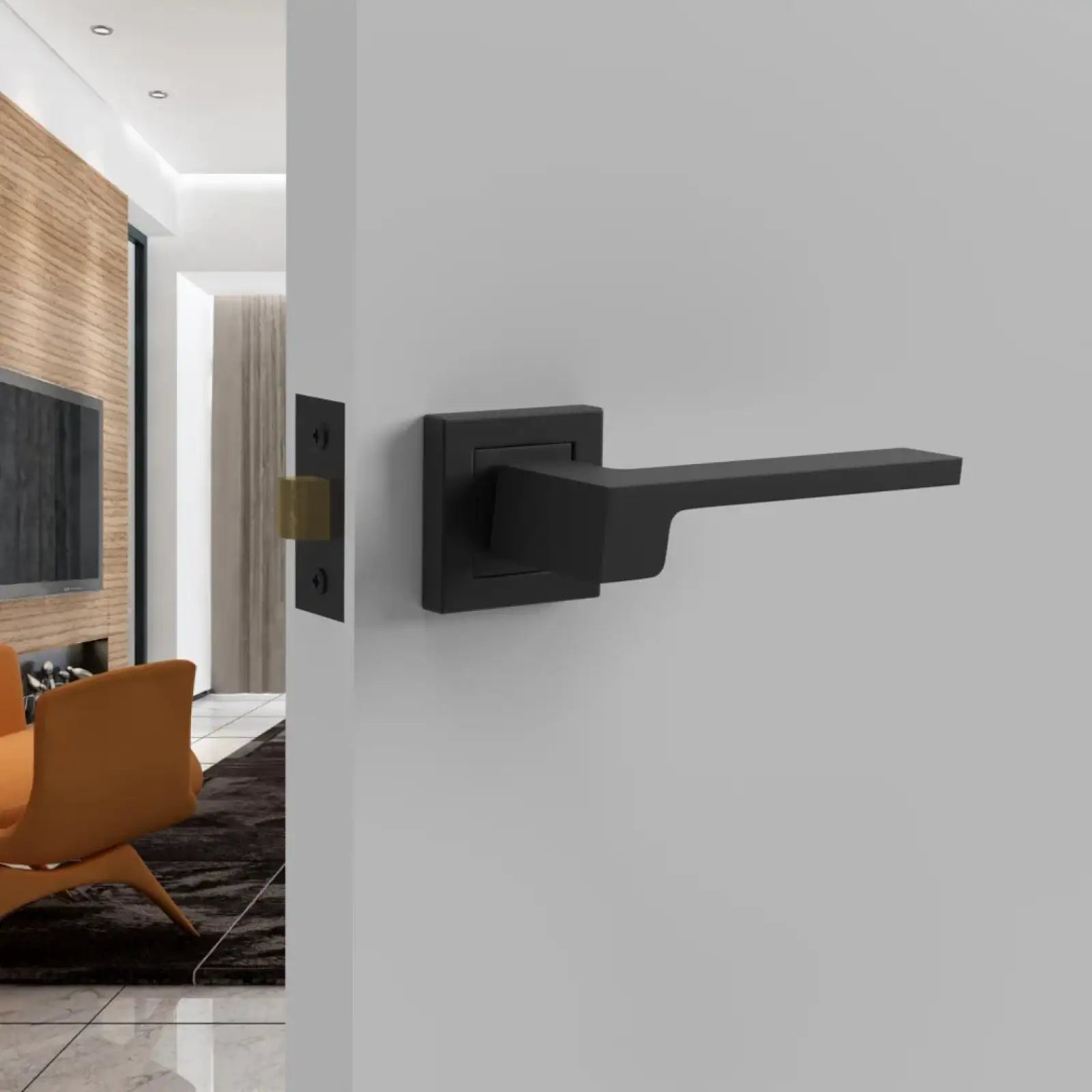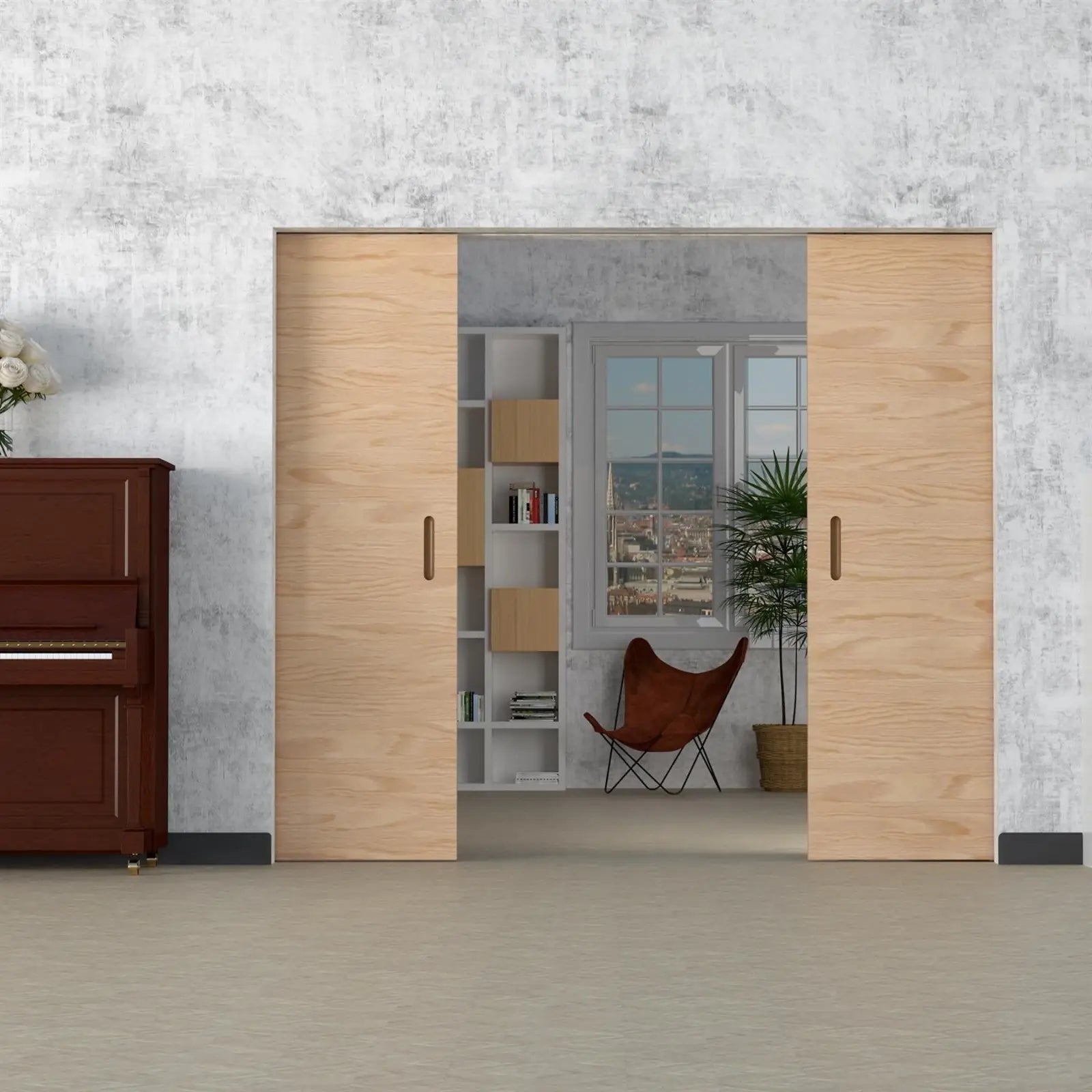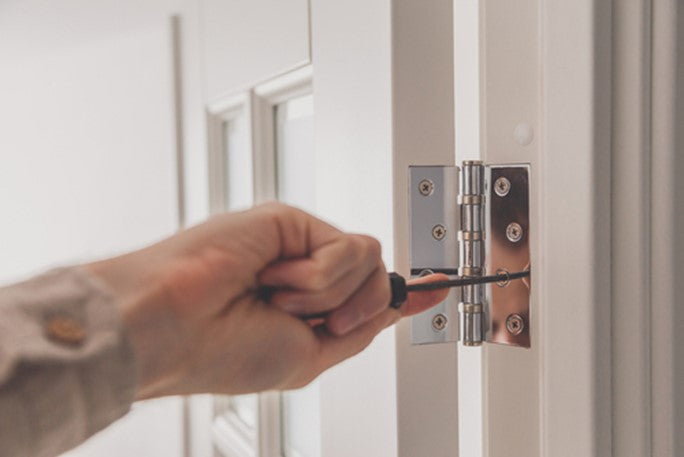How To Fit Door Hinges: A Complete Guide
Door hinges are mechanical devices that connect a door to its frame, allowing it to pivot open and close. Hinges consist of two plates (called hinge leaves) joined by a pin, which acts as the pivot point. Follow along to learn how to fit door hinges correctly the first time.

What Tools Do You Need to Fit Door Hinges?
You don’t need complicated or fancy tools to fit external or internal door hinges. Along with our guide on how to fit door hinges, these are the only tools you’ll likely need:
● Door hinges or door hinge sets
● Matching screws (if not included with the hinges)
● Screwdriver set including Phillips and flat-head, or drill with screwdriver bits
● Pencil
● Chisel
● Wood filler for minor gaps or imperfections
● Tape measure
● Carpenter's square
● Door hinge template
● Hammer
● Utility knife
● Radius gauge
Measuring and Marking Door Hinges
When replacing door hinges, getting the right size hinge is important, as the door won’t open and close properly if the hinge size is wrong for the door. Measuring a hinge means determining its dimensions. These include the width when fully open, the thickness, which should match that of the door, and the radius, which is the corner measurement.
In the UK, most standard internal doors are 35mm thick. The 76mm x 50mm 2 ball bearing hinge is the most commonly used size. The most common standard measurements for door hinges are:
● 76mm (3 inches) for internal doors and lightweight external doors
● 102mm (4 inches) for heavier external or internal doors
● 127mm (5 inches) for heavy doors and fire doors.
To measure the width of your hinge, open it and place it on a flat surface. Using a tape measure, measure from one side of the open hinge to the other. Ensure you measure from the outer edges of the hinge leaves to get an accurate measurement.
Some hinges have curved corners (instead of square). In this case, you’ll want to measure the corner radius using a special tool called a radius gauge. Place the radius gauge against the rounded edge of the hinge leaf, ensuring you align it with the curve as closely as possible, and take down the measurement.
How To Mark Perfect Hinge Positions Every Time
Two or three hinges are typically required for a standard door. Using a tape measure and pencil, mark the placement of the top hinge approximately 18cm from the top of the door and mark the bottom hinge about 25cm from the bottom. If a third hinge is needed (for heavier doors), position it midway between the top and bottom hinges.
Ensure you mark the desired height for your hinges on the door frame and the corresponding locations on the door itself. Hold the hinge over the marked area on the door and use a pencil to trace around it for perfect marking. This ensures the hinge will fit snugly.
Common Measuring Mistakes To Avoid
Accurate measuring is essential for the door to hang well and open and close perfectly. One of the most common mistakes people make when measuring is placing the hinges unevenly or too far from the edge of the door. Another mistake is miscalculating the hinge height, especially when using multiple hinge sizes for a heavier door.
Installing Door Hinges Step by Step
These are the steps involved in installing door hinges accurately the first time.
- Gather your tools, including your door hinge set.
- Determine the number of hinges you’ll need for the door and their sizes.
- Measure and mark the hinge placement on the door and frame.
- Cut the hinge recesses (a process known as mortising) according to how many hinges you’re placing on the door.
- Attach the hinges to the door.
How To Cut Hinge Recesses Correctly
Cutting hinge recesses, or mortises, ensures hinges sit flush with the door and frame for smooth operation. You can cut a recess using a hammer, wood chisel, or a router with a flush-cut bearing bit. A door hinge template (available from hardware stores) is handy for a precision fit.
Start by aligning the hinge leaf on the door and tracing around it with a pencil to mark its exact location. Using a utility knife, score along the pencil line. This helps prevent wood splitting and creates a precise edge for the recess.
With the flat side of the chisel facing down, carefully chisel out the wood inside the scored outline. Work gradually, removing a thin layer at a time. Be careful not to go too deep.
Chisel horizontally to create a shallow recess, then angle the chisel slightly to clean up the edges. Test-fit the hinge as you go to ensure it sits flush with the door edge. Follow the same process to cut matching recesses on the door frame, ensuring the hinge leaf aligns perfectly when the door is mounted.

How To Fit Door Hinges to The Door Frame
Hinges are installed on the door frame first. Once the recesses are cut, hold the hinge against the recess on the door frame and align the screw holes. Insert the screws into the holes and tighten them using a drill or screwdriver for all the hinges on the door frame.
How To Fit Door Hinges to The Door
Once the hinges are securely placed on the frame, align the door and attach it to the hinges. The procedure for securing hinges to the door is the same as for attaching them to the door frame. Ensure the hinge pin is positioned correctly for the door's swing direction.
Troubleshooting Common Door Hinge Problems
Loose hinges are one of the most common problems. In this case, you can easily tighten the loose screws with a screwdriver or replace them with longer or thicker screws. Another common problem is squeaky hinges or stuck hinge pins, which can usually be fixed using lubricant.
Knowing how to mount door hinges is important to avoid a wonky door. Mistakes can cause problems such as uneven door gaps or poorly aligned hinges. Here’s how to fix these problems.
Fixing Uneven Door Gaps
If you spot uneven door gaps, check the screws on all hinges to ensure they’re firmly secured to the door and the frame. Use longer screws (around 50mm) for better grip, especially on the door frame.
If the top or bottom gap is too wide, loosen the screws on the top hinge slightly and insert a thin cardboard or plastic shim behind the hinge leaf on the door or frame. When you’re done, retighten the screws.

What To Do When Hinges Are Not Aligned
Hinges may not align if one is recessed too deeply. To fix this, unscrew it and fill the recess with a small piece of wood or filler; sand it flush, reinstall the hinge, and test the door. For hinges that aren’t recessed enough, carefully chisel a bit more wood to make the hinge sit flush.
Bent or worn hinges or pins can also cause misalignment, and you’ll have to replace them with new ones of the same size and type. Finally, inspect the door frame to see if it is warped or out of square using a spirit level. If so, it may need trimming, or the frame may need to be repaired.
Get Your Door Hinges and Sets Today
We have a range of top-quality ball-bearing fire-rated door hinges that offer the perfect blend of functionality and style. These hinges come with matching screws and are designed to elevate the look and functionality of any door. Contact us today for expert advice on the right hinges for your doors.
FAQs
Can I replace door hinges without removing the entire door?
Yes. You can do this by removing one hinge at a time, replacing it with a new one, and then moving on to the next hinge. This may take some time and even a second pair of hands to help you stabilise the door.
What size screws should I use for door hinges?
In most cases, door hinge sets are sold with the right size and colour screws. If you need to buy screws, consider the weight and thickness of the door and the hinge type, finish, and size. The objective is to ensure strong materials with the correct finish are used to maintain the functionality and aesthetics of the door and frame.
How many hinges should I fit on a standard interior door?
Standard interior doors usually require only two hinges. If the door is heavier than 20kg, we suggest you use three hinges. Contact Decor & Decor for offers on hinges for all types of doors.






